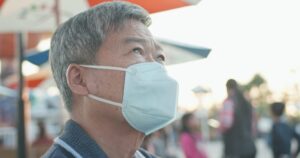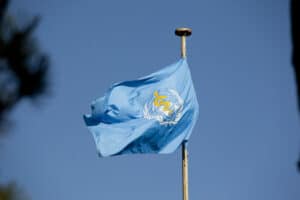On 25th May 2020, George Floyd was killed by Derek Chauvin, a white Police Officer who reportedly knelt on Floyd’s neck for over nine minutes to the sounds of the man pleading for his life and calling out that he could not breathe; Floyd was being arrested on the suspicion of using a fraudulent $20 bill.1 Since his death, protests have swept cities throughout the USA as well as other cities across the world, including London.2 Whilst having started out as a protest against George Floyd’s death and the failure to bring the perpetrators to justice, the protests have since swelled to speak out against the inequalities faced by those of Black, Asian and minority ethnic (BAME) communities, especially by those who are black or African-American. As CNN has stated the current protests are being ‘play[ed] out across a besieged nation where a coronavirus pandemic had confined most Americans at home for months’.3
Frustrations caused by restrictions due to COVID-19 have only served to heighten the tensions within a community still reeling from the lynching of Ahmaud Arbery by an ex-Police Officer in Glynn County, Georgia in February.4 In a community who are three times more likely to be killed by Police than their white counterparts, and who have had to contend with heightened injustices at the hands of actions tantamount to extrajudicial killings, such as the cases of Eric Garner, Michael Brown, Trayvon Martin and Tamir Rice; the ‘dystopian circumstances’ of this pandemic and the seeming fact that systemic racism remains rife across the country has evidently led to a disproportionate impact with this pandemic only further fuelling the flames.5 6
Similar to the UK, BAME people in the USA are at disproportionate risk from the consequences of COVID-19 with black Americans 2.4 times more likely to die than white Americans.7 In Minneapolis, where the protests started, black people accounted for 34% of COVID-19 cases, despite comprising only 19% of its population. At state-level black people comprise 7% of Minnesota’s population yet comprise 16% of the state’s confirmed cases.8 9 A similar story is seen across the USA with black people in Louisiana accounting for 70% of the deaths, but only accounting for 33% of the population, and in Alabama with 44% whilst accounting for only 26% of the population.10 Disproportionate effects to the COVID-19 pandemic have also been felt in the jobs market with black people more likely to work in high-exposure occupations and being at a greater risk of unemployment. Current figures showing the unemployment rate amongst black people is 16.7% compared to 14.2% suffered by white Americans. Other ethnic minorities including Asian Americans and Hispanics have also been badly affected by this pandemic with unemployment rates standing at 14.5% and 18.9% respectively.11 In Minnesota, the Black, Hispanic, and multiracial population have accounted for 17% of unemployment claims files since 2nd March.12
Other inequalities have begun to emerge during the COVID-19 pandemic, which have been further highlighted by the George Floyd protests. When looking at the differences between anti-lockdown protests attended by a majority white demographic and that of the George Floyd protests, the disparity between both the police responses and President Donald Trump’s response is telling. At the end of April and beginning of May, several states experienced people, mainly conservatives, protesting the restrictions implemented to stop the spread of COVID-19. The best publicised of these protests occurred in Michigan that saw protestors, some of them carrying guns, being allowed to enter Michigan’s capitol building to demonstrate what they felt to be restrictions on their inalienable rights due to the stay-at-home measures enforced.13 The presence of armed protestors led to several Michigan politicians to equip themselves with bullet-proof vests.14 A similar armed presence was also felt in protests in other states such as North Carolina.15 Despite the aggressive stance of the protestors, many of which displaying what has been described as racist paraphernalia, President Trump has sent tweets of support to the protestors calling them ‘good people’ and encouraging people to ‘liberate Michigan.16 17 On the other hand, those protesting the unlawful killing of George Floyd have been branded as ‘thugs’ by President Trump with a threat that ‘when the looting starts, the shooting starts’.18 19 Further to this, Amnesty International has condemned Police responses to the George Floyd protests as ‘heavy-handed’ and ‘militarised’ with the use of pepper spray and rubber bullets in effect from the first night of protests.20 The recent protests against Police brutality have also seen a disproportionate amount of arrests in comparison to the anti-lock down protests with 1,669 people so far arrested across 22 cities, and multiple states declaring varying levels of emergency.22 23 In a further example of misplaced priorities, President Trump has drawn the ire of many through his prolonged and perceived lack of comment or leadership, aside from the widely reported inflammatory tweets on the matter, directing his attention instead to the signing of an executive order designed to reign in social media sites rather than deal with the civil unrest erupting within the country, and the 100,000 COVID-19 deaths and record-unemployment.24 25 When asked about the differences in Police responses by Australian news outlet SBS, Dr David Smith, an expert on US politics at the University of Sydney said that the racial make-up of each protest was a ‘significant factor’ and that the Police response in Minneapolis was ‘predictably heavy-handed’. However, Dr Smith also cited the target of the protestors as another significant factor for the differences in Police response with those at the Michigan capitol building targeting the politicians and those in Minneapolis, and now across several states, targeting the Police.26
Whilst Derek Chavin has now been arrested and charged with third-degree murder and second-degree manslaughter, charges were only brought after the third day of protests with inaction by the Justice Department serving only to prolong the protests.27 Further issues have also arisen, with agitators and opportunists having infiltrated protest movements in an attempt to tarnish the largely peaceful protests.28 Bouts of violence have also occurred with riots and several shootings reported, including one in Louisville, Kentucky, which resulted in at least seven people being shot.29 30 Fears that COVID-19 cases could also surge amidst the protests have also been voiced with health officials warning that mass protests could ‘exacerbate the spread of the virus’ which is already disproportionately impacting minorities, a fear that is further amplified when taking into account Minnesota State Governor Tim Walz’s claim that as many as 80% of those arrested were from outside the state.31 32
As stated by Nuwman, a resident of Minneapolis interviewed by the BBC in reference to the George Floyd protests, ‘This is not just a singular moment. This is a cataclysm. A combination of all the things that happened before’.33 Whilst the current protests rocking America are in reply to the continued injustices and inequalities experienced by black American’s, the current COVID-19 pandemic and its disproportionate impact on this community serves only to compound the issues they already face.


